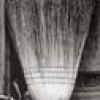
Posted
It just dawned on me today. Perhaps many of you have already figured it out... but.
I like to experiment a lot with ideas. I've asked that there be a mute container command, and also mute certain notes in an instrument track. That way if you don't like the change you made, it's easy to retrieve your original idea without having to go thru multiple undoes (not all actions are undoable also) or revert to last saved version. (Which is a useful procedure too).
Create a new arrangement. Create several new empty instruments. When you want to save something from your working arrangement,Simply drag in instruments and put on top of one of the new empty instruments. Use it as temporary storage. Then it's an easy process to recover any version you created. You can even drag in multiple instances of an instrument track with various changes as a back=up. Just remember to create new empty instruments. Andre, Supertonic, feel free to add your observations or suggestions. (I don't want to mislead anyone, and I just discovered this)
Sun, 2012-05-13 - 00:22 Permalink
Thank you for the sharing ideas .
i really want to read more user ideas here.
i want to add a few ones
keeping them in one topic will be useful , kind of a user tips tricks topic
i hope you don't think this is a hijacking thread :D
ok now serious
-keep the midi imported arrangements as an extra / extended Accompaniment library
with "simple GM sound" associated this mean you can open them easily , listen + pick one of them fast...
since we can assign any vsti to any channel as we want ...
they will be a definitely life saver in one day
you can create accompaniment from any part of this arrangements then adding polished vsti sounds needs just a few mouse click !
actually i mentioned in one of my older posts ..i think no harm to repeat in here too
-personally i prefer to keep my phrases library with 2 or 3 interpretation variations.
1 is input for harm.. so static . this is very important to me especially if i looking for the chord progressions
also this mean there is full of ready to use background tracks start with ,
string sections guitar rhythm / chord tracks so on.
in this case keep long phrases for example rhythm guitar phrases 8 bar 16 bar... but... definitely divide them every 1 bar or 2 bars to new small phrases.
2 interpretation "Weak" sometimes "Bypass"
3 one of the interpretations that close enough to phrase's style ...
-think , act flexible : try phrases with different instruments there is no limit... just for simple example.. try piano grooves or guitar grooves with staccato strings
even drum tracks can give very interesting arpeggio / sequence moves if you try with non static pitch interpretations.
that's it so far
Synfire says there is new update
time to download and see whats new!!
Sun, 2012-05-13 - 00:44 Permalink
Yes I also agree, I import twice one with static, one with interpretation, Sometimes I cut up and use phrases from both. It's useful to isolate the progression and save this as a seperate entity, either to use, refer to current or future sessions.
Andre or Supertonic can you review how one makes a pallette of chord progressions. I did this once about 7 months ago, but somewhere between all the updates, my chord progressions got lost in the Harmony pallette, and I can't remember exactly how I did it.
I find it useful to have a large number of chord progressions stored in pallettes the way the two SFP factory pallettes are.
Sun, 2012-05-13 - 11:14 Permalink
This is a huge and extremely important feature we are talking about here. The ability to A/B compare different ideas is essential for music prototyping.
I've spent some time breeding over the idea of a mute container tool, but it doesn't convince me. One would still need to put that container aside and create a new one. Over time, the arrangement gets messed up this way.
I'm rather for versioning. Imagine you could could tell a container to put its current state aside and keep it as a version that you may eventually want to go back to. Same for phrases: Put a copy of a phrase aside for later. The great advantage of this is your arrangement retains its current structure and does not get cluttered over and over with muted objects.
keep the midi imported arrangements as an extra / extended Accompaniment library
Did you know you can drag an entire container to a library window? It is the fastest way to keep stuff from an arrangement in a library for later reuse.
can you review how one makes a pallette of chord progressions
Simply save the desired progressions to your personal documents folder under "Synfire Pro / Config / Progressions". This will list them in the menu after you restarted Synfire. It is a good idea to put them all in a single progression document, naming the sections after each progression. These will appear in the menu.
Sun, 2012-05-13 - 12:36 Permalink
I've spent some time breeding over the idea of a mute container tool, but it doesn't convince me. One would still need to put that container aside and create a new one. Over time, the arrangement gets messed up this way.
I think a mute container tool would be great. Could also be very useful for experimenting, not only for A/B comparison. Most of my musical ideas come from experimenting and the more experimental features Synfire offers the better.
How I would use te mute container tool for experimenting: I would prepare an arrangement with say 10 container which contain different parameter settings and variations of musical phrases. If I now could mute these containers independently, I would have thousand different combinations for muting/demuting available which I could try out easily and many of these combinations would probably produce different musical results (assuming that a muted container would not produce silence but would be set to empty so that it is transparent for the parameter inheritance). So, the mute container feature could also work as an idea tool.
I always do such kind of experiments. Dragging parameters from here to there, experimenting with different container positions and length, trying out different interpretation settings, and so on. Very often I get surprising and very exciting results in this way. Therefore a mute container feature would fit perfecty into my workflow.
I'm not worried about messing up an arrangement with muted containers. There could be a "delete all muted container" command. There also could be displayed some small buttons in the containers: For example a button for mute/demute and another one for deleting the container.
Sun, 2012-05-13 - 12:40 Permalink
I like the versioning idea.
What about an extra parameter called version with its own phrase view? Then you could even switch versions through an instruments figure playback, ie 1st iteration of phrase plays as version 1, 2nd as version 2. Version could apply to containers, phrases or even notes?
Muting containers though would still be useful.
On the muting front, I still would like a way to mute an instrument without havin to scroll all the way to the left. This is impossible to do if you have a long motif and hav follow transport on. A quick solution would be a key press, eg alt space on a track toggles instrument mute? Have muted instrument notes show up in a different colour so it's easy to see what's muted and what isn't?
Sun, 2012-05-13 - 13:27 Permalink
Did you know you can drag an entire container to a library window? It is the fastest way to keep stuff from an arrangement in a library for later reuse.
yes indeed
i was talking about Accompanmets especially.
keeping that arranges saves me from pre-create hundereds of accompaniments and variations ..intro..chorus..break so on...
thanks for the making it clear
Sun, 2012-05-13 - 22:20 Permalink
My main concern is being able to look at an arrangement and see a lot from the container window what is going on.
I had another thought about the instrument section. Would it be possible to see the rhythm data as five different colors overlaid on the note data. in the instrument section This way you could see the effects of pause, step, rhythm without having to go into the parameters.
This would also give you a clearer overview of what was happenning there. As SFP is now, it's kind of a happy mystery, how and why things are happening. One might put step data in one container, velocity in another etc. It becomes impossible to easily grasp
Regarding the mute note feature = Of course 'Pause' can be used it's easy to use. Perhaps one could highlite a section of notes and click pause, This temporarily silences them, but they are not gone.
This again points back to the ability for one to quickly grasp the effects of alll the processes one has chosen.
Maybe if one clicked on the word 'Rhythm" in the parameter section. The five commands would assume a color and display that over the note data both in the regular instrument section and on an enlarged zoomed in of that one track alone. One would click the desired commang, say 'pause', then proceed to draw in data. Next go to another parameter and draw that in, witht a visual reference to the first rhythm command.
When you 2nd click the word "Rhythm" in the parameter page, all that detailed data would go away. If one wanted he would be able to display the rhythm data for several instruments at the same time. Shift click on the word 'rhythm' in the parameter section and all rhythm data would go away.
PS. Thanks Janamdo - was not aware of that feature. This is a use feature.
Mon, 2012-05-14 - 02:45 Permalink
My intention was for quick A/B comparisons, I'd say just leave the container where it is, mute, and create or clone a new one with some differences. If the new works, great delete the old one, if not delete the new one. The mute containers of course could have any parameters. I'm looking at this as a temporary step. I would probably not mute more than two containers at any given time.. The trick with creating music especially with the new software is that when you leave too many options undecided, you quickly become lost in the 'ABYSS OF INFINITE CHOICES'. I'm talking music here not life.
You're idea sounds more elegent, As long as there is a SIMPLE EASY ASPECT to it. Having to dig through containers to discover the many details, wil guickly lead to AOIC,
I' usually use only one instrument in a container. With an arrangement of muted containers, I can easily see, I'm using bass 2 container now, and certain step paramaters in container 6, I've learned from experience you have to create and trim your idea as the song progresses, keeping too many options available just leads to a lot of work and conclusion at end.
However I bow to you, you have a lot more experience with the program, and know what the coding situation would be for these different features. If it's neater, and easier to understand, than that is good.
Another situation is actually MUTING NOTES in an instrument. Sometime I want to temporarily mute phrases in different instruments to hear an oboe do the answer instead of a bassoon, or I realize there is too much sax, and I want to move the phrases around between two other instruments. Someties it takes a few shuffles, to get a logical progressive order of how instruments will play. I've been striving to start with simpler phrases, with simpler sounding instruments, then building up both phrases and harmonics by changing instruments. It's a complicated process, and there is still a lot of suprises for me.
In Logic you can mute notes, in the score they disappear, in piano roll, they are greyed out. After juggling phrases for a few minutes I decide on the order, After a few hours, or when I feel the song is in a good solid form, I go thru and delete all muted notes, to avoid confusion later on, (should I accidently hit unmute). If you could do something similar in SFP or even use the concept you mentioned about containers, that might be good.
It's like building something big, sometimes you put up temporary structures to keep somethig afloat (like scaffolding when you're building a house), and as the project becomes more complete, then you get rid of those temporary structures.
NOTE- AMENDED POST = Yes dragging a container to bottom half of library works fine.....
REGARDING USING LIBRARY AS STORAGE - I wasn't aware of using the library that way.
This a decent solution. You still have options, but you're keeping the arrangement clean looking. Yes a lot of times, I want to get rid of an idea, but not lose it completely, Cause after working on a few instruments, the old idea might be more useful.
Thanx for your thoughtful insights and explanations.
I've got to give SFP a gold star for stability. It very rarely locks up, and it might stop and look dead for 30 seconds, but it comes back to life. With Logic lately, I'm saving every five minutes, cause it just randomly locks up or window are devoid of any information, making saving a difficult guessing game, of where the save button is. Synfire on the other hand has been getting progressively less prone to crash or lock up..
Mon, 2012-05-14 - 04:57 Permalink
Hi Mark..
HN2 is updated for using chord inversions on a easy way now ..and probably the same for SFP too
How does it works?
In the progression editor you can put your chords there and select a number(key)(horizontal row) on your keyboard ..with this you can select the rootnote of the chord
It depends wat kind of chord you want to use : a triad or 7 chords or more?
1- stands for a rootchord ( not inverted )
2- gives the first inversion
3- gives the second inversion
4 - works only for 7 chords ( because there are 4 notes in this chord )
5- ?
So it is no easy to try it in the chordprogression what chords do have a particular inversion and how they sound
( as you now.. using alone not inverted chords in chord progressions is impossible : to get a better voice leading you must work with chord inversions, ofcourse you can work with the not-inverted chords, but voice leading is than not optimal )
This feature with the 1-2-3- 4- .. number keys you can easily try out proven chordprogression from others: it is now easy to construct the right chord for you in SFP or HN2.





